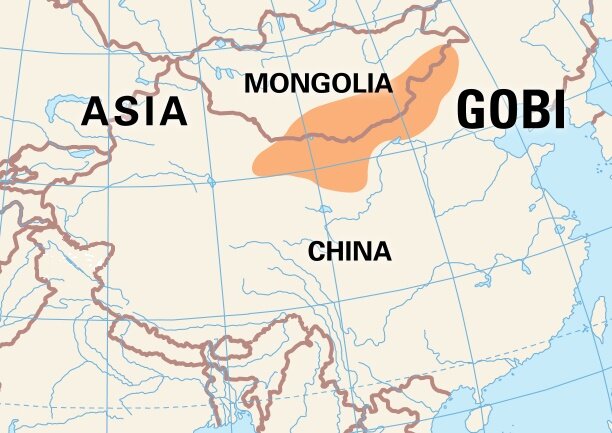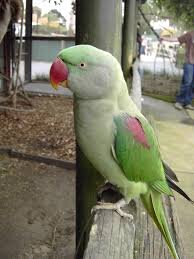Science & Technology
Scientists Restore Brain Cell Activity
In a radical experiment, scientists have restored brain circulation and some cell activity in pigs' brains, hours after the animals died in a slaughterhouse.
- The results, though done in pigs and not humans, challenge the long-held view that, after death, brain cells undergo sudden and irreversible damage.
- It was held that the brain cannot long survive without blood. Within seconds, oxygen supplies deplete, electrical activity fades, and unconsciousness sets in. If blood flow is not restored, within minutes, neurons start to die in a rapid, irreversible, and ultimately fatal wave.
- In the study, the researchers developed a novel system for studying intact, postmortem brains, dubbed BrainEx.
BrainEx
- It's a network of pumps that pipe a synthetic solution — a substitute for blood — into the brain's arteries at a normal body temperature.
- The brains were placed in the BrainEx system 4 hours after the pigs' death, and were allowed to "perfuse" with the synthetic blood substitute for 6 hours.
- During this time, the BrainEx system not only preserved brain cell structure and reduced cell death, but also restored some cellular activity.
- For example, some cells were metabolically active, meaning they used glucose and oxygen and produced carbon dioxide. Other cells reacted with an inflammatory response when stimulated with certain molecules.
- In contrast, the brains that were not treated with BrainEx rapidly decomposed.
Ethical concerns
- Although scientists are a long way from being able to restore brain function in people with severe brain injuries, if some restoration of brain activity is possible, then the definition of brain death will need to changed.
- More guidelines is required around the ethical issues raised by the study, which raises long-standing assumptions about what makes an animal ― or a human ― alive.
- One concern is also of how to detect consciousness and how long systems like BrainEx should be allowed to run.
Significance
- The work could provide scientists with new ways of studying the brain, allowing them to examine functions in the entire, intact brain in a way that hasn't been possible before.
- This in turn could help scientists better understand brain diseases or the effects of brain injury.
- However, the researchers stressed that they did not observe any kind of activity in the pigs' brains that would be needed for normal brain function or things like awareness or consciousness.
Way Forward
- Because the study lasted for only 6 hours, more research is needed to know whether BrainEx can preserve brains for longer than this time.
- In addition, a lot of questions remain about how similar this model is to the brain environment.
- The system does not use real blood, and the brain is not bathed in fluid as it is inside the skull.
- The new technology opens up opportunities to examine complex cell and circuit connections and functions that are lost when specimens are preserved in other ways.
- The work also could stimulate research on ways to promote brain recovery after loss of blood flow to the brain, such as during a heart attack.
Biodiversity & Environment
Alexandrine Parakeet
District administration of Jhalawar in Rajasthan is using the Alexandrine Parakeet, as the mascot of voter awareness program for the 2019 Lok Sabha polls.
- Also known as Gagroni parakeet, it derives its name from the Gagron fort of Jhalawar, it is also known for imitating the human voice.
- Apart from focusing on the upcoming polls, the administration is concentrating on the conservation of parakeet
- The district administration has made a cartoon series under SVEEP programme which is based on Gagroni parakeet.
Systematic Voters’ Education and Electoral Participation (SVEEP)
- SVEEP started in 2009 is the flagship program of the Election Commission of India for voter education, spreading voter awareness and promoting voter literacy in India.
- SVEEP is designed according to the socio-economic, cultural and demographic profile of the state as well as the history of electoral participation in previous rounds of elections and learning thereof.
- It is protected under the Schedule 1 (B) of the Wildlife protection act (WPA) 1972. It is native to South and South East Asia.
- It is ‘Near Threatened’ in the Red list of the IUCN and in Appendix II of CITES.
- The male parakeet has a red ring on its neck and red spots on wings.
- Poaching of this parakeet for its household pet uses and for the flesh, and habitat destruction has led to the sharp decline in the population of the bird.
Indian Economy
Investments through P-notes
Investments through Participatory Notes in domestic capital market rose to Rs 78,110 crore at the end of March,2019 amid positive market sentiments.
- Participatory notes (P-notes) are issued by registered foreign portfolio investors (FPIs) to overseas investors who wish to be a part of the Indian stock market without registering themselves directly after going through a due diligence process.
- The increase in P-notes investment is in line with the higher net inflows of Foreign Portfolio Investors (FPIs) in the cash segment.
Foreign Portfolio Investment
- Foreign portfolio investment (FPI) consists of securities and other financial assets passively held by foreign investors.
- It does not provide the investor with direct ownership of financial assets and is relatively liquid depending on the volatility of the market.
- Foreign portfolio investment is part of a country’s capital account and is shown on its Balance of Payments (BOP).
- The BOP measures the amount of money flowing from one country to other countries over one monetary year.
- The investor does not actively manage the investments through FPIs, he does not have control over the securities or the business. However, since the investor’s goal is to create a quick return on his money, FPI is more liquid and less risky than Foreign Direct Investment (FDI).
- In contrast, FDI lets an investor purchase a direct business interest in a foreign country. The investor’s goal is to create a long-term income stream while helping the company increase its profits.
- The investor controls his monetary investments and actively manages the company into which he puts money. However, because the investor’s money is tied up in a company, he faces less liquidity and more risk when trying to sell his interest.
Important Facts For Prelims
Important Facts For Prelims (18th April 2019)
Simulated Martian Base
- A Chinese company called C-Space has opened “Mars Base 1,” a simulated Martian base of future astronauts in the desert hills of Gobi Desert in China’s Gansu province.
- The base is currently an educational facility and in the future, it will be expanded to be a tourist destination also.
- “Mars Base 1” will help in educating students about how life could be like on Mars.
Gobi Desert
- The Gobi is a desert and semidesert region of Central Asia. The Gobi (from the Mongolian Gobi, meaning “waterless place”) stretches across huge portions of both Mongolia and China.
- The Gobi desert is bounded by the Altai Mountains and the grasslands and steppes of Mongolia on the north, and Tibetan Plateau to the southwest, and by the North China Plain to the southeast.
Exercise Varuna
- India and France will be conducting joint Naval exercise “Varuna” off the coast of Goa from May 1, 2019.
- Along with other naval ships Aircraft carriers of two countries, INS Vikramaditya and FNS Charles de Gaulle will be the part of Naval Exercise.
- The two countries have also operationalized their reciprocal military logistics support agreement, which saw French anti-aircraft destroyer FNS Cassard docking at the Mumbai naval port in January.
- Under the pact, Indian warships can access French bases like the Reunion Islands near Madagascar and Djibouti on the Horn of Africa in the Indian Ocean.
Authority for Advance Rulings
- An Authority for Advance Rulings (Central Excise, Customs & Service Tax) was set up by the Government of India to facilitate foreign investment into the country.
- It gives binding rulings, in advance, on Central Excise, Customs and Service Tax matters pertaining to an investment venture in India.
- The scheme of Advance Rulings was introduced under the Income-tax Act, 1961. Under the scheme, the power of giving advance rulings has been entrusted to an independent adjudicatory body.
- Accordingly, a high-level body headed by a retired judge of the Supreme Court has been set-up. This is empowered to issue rulings, which are binding both on the Income-tax Department and the applicant.
- The Authority for Advance Rulings consists of a Chairman, who is a retired Judge of the Supreme court and two members of the rank of Additional Secretary to the Government of India, one each from the Indian Revenue Service and the Indian Legal Service.
- Any non-resident person whether individual, company, firm, association of persons or other body corporates can make an application for seeking an advance ruling in regard to his/its tax liability. Similarly, a certain category of residents can also seek advance rulings.
World Heritage Day
- Every year, April 18 is celebrated as World Heritage Day.
- The International Council on Monuments and Sites (ICOMOS) in 1982 had decided to celebrate April 18 as as the International Day for Monuments and Sites or World Heritage Day.
- Approved by UNESCO in 1983 during its 22nd General Conference, the day is dedicated to recognising sites of historical importance, raising awareness regarding them, and stressing on the need to restore and preserve them.
- Every year, a theme is proposed for the day which guides the celebrations.The theme for this year’s celebrations is ‘Rural Landscapes’, which is related to the theme of the 2019 ICOMOS Scientific Symposium on Rural heritage that will take place in Marrakesh, Morocco in October.
- This year’s International Day for Monuments and Sites offers the opportunity for National and International Scientific Committees to raise awareness about the relevance of rural landscapes, the challenges that encompass their conservation, the benefits that these efforts provide, and how rural landscapes are intrinsically related with sustainable development.
- In the ICOMOS “Principles concerning rural landscapes as heritage”, adopted by the ICOMOS General Assembly in 2017, rural landscapes are defined as “terrestrial and aquatic areas co-produced by human-nature interaction used for the production of food and other renewable natural resources, via agriculture, animal husbandry and pastoralism, fishing and aquaculture, forestry, wild food gathering, hunting, and extraction of other resources, such as salt. Rural landscapes are multifunctional resources. At the same time, all rural areas have cultural meanings attributed to them by people and communities: all rural areas are landscapes.
The International Council on Monuments and Sites (ICOMOS)
- It is the only global non-government organization of this kind, which is dedicated to promoting the application of theory, methodology, and scientific techniques to the conservation of the architectural and archaeological heritage.
- It is headquartered in Paris, France.
United Nations Educational, Scientific and Cultural Organization (UNESCO)
- Formed in 1945, it is a specialized agency of the United Nations (UN) based in Paris.
- Its declared purpose is to contribute to peace and security by promoting international collaboration through educational, scientific, and cultural reforms in order to increase universal respect for justice, the rule of law, and human rights along with fundamental freedom proclaimed in the United Nations Charter.
- As of January 2019, it has 193 member states.
- UNESCO seeks to encourage the identification, protection and preservation of cultural and natural heritage around the world considered to be of outstanding value to humanity. It has a World Heritage List for such cultural and heritage sites.
- India has its 37 sites listed under the World Heritage List.





